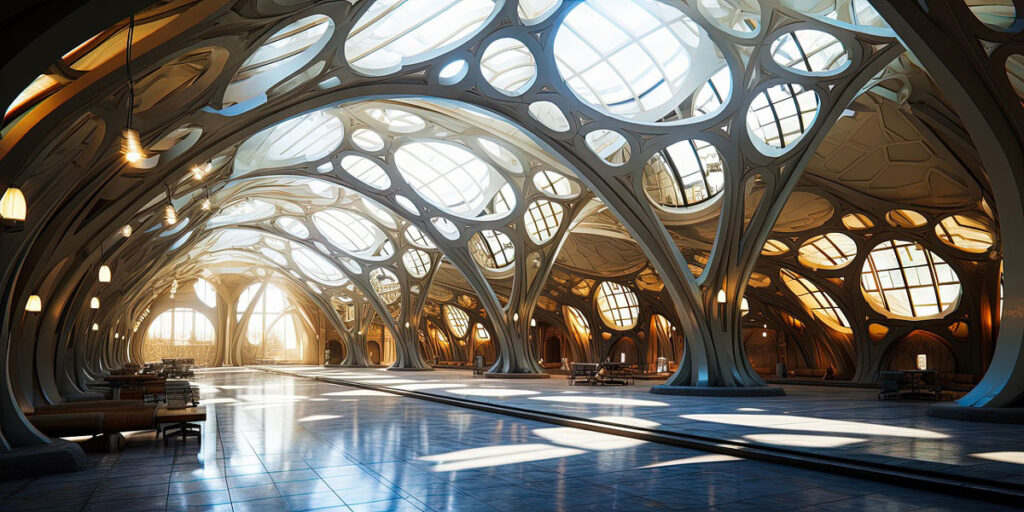Exclusive Neuroject Article: AI architecture generators have become a valuable tool for architects throughout the world. Because artificial intelligence has created a huge transformation in all industries, and architecture is no exception to this rule. Recent statistics from architectural companies indicate a 50% reduction in design process time, without reducing quality or creativity! Also, in a survey, 90% of users’ satisfaction with being in AI architecture generator spaces was recorded. This high level of satisfaction proves smart generators’ ability to respond effectively to users’ needs.
The use of intelligent and widely accepted architecture generators has become more widespread in recent years. Depending on the specific needs or preferences of the user and the functionality of the design, various generators can be used in architectural projects. In this article, we introduce 18 examples of the best AI architecture generators in 2024. We also review the basic features, main application, user experience and basic data required for architectural visualization by these generators. To learn about all the valuable features these generators can bring you, you are encouraged to read the following article.
Table of Contents
What is an AI Architecture Generator?
“AI Architecture Generator” refers to a system that uses advanced artificial intelligence algorithms to visualize, conceptualize, and draw architectural plans. This technology is intended to assist architects in finding innovative, customized, and efficient architectural solutions. Artificial intelligence-based architectural generators have the potential to simultaneously pay attention to the aesthetic and functional aspects of a space. Also, these generators increase creativity, provide intelligent solutions, reduce time and automate the design process. In addition to the analysis of environmental factors, sustainability, energy efficiency, and an awareness of the carbon footprint of the environment, these smart tools also take into account the carbon footprint of the environment.
Of course, AI architecture generators are not limited to common building designs. These generators have been used to create creative structures for bridges, stadiums, and even space habitats. The first artificial intelligence architectural design implemented in the real world was a booth called “Deep Space” at the Ars Electronica Center in Austria. It is interesting to know that many international competitions have been held for architectural designs based on AI generators. The first competition called “City Challenge” was held in 2021 and showcased artificial intelligence’s potential in urban planning and design.
Architects and AI share a similar relationship in that the conductor provides the score and the orchestra provides the sound, and the AI provides the design while the architect brings it to life. The future of artificial intelligence in architecture looks very promising. In addition to generating designs, AI can optimize and customize them. Furthermore, AI can improve energy efficiency, predict the environmental impact of buildings, and automate construction processes. Moreover, AI can be used in cost estimation and maintenance. Architects will likely be using AI more and more as technology advances.
Suggested article for reading: AI in Construction
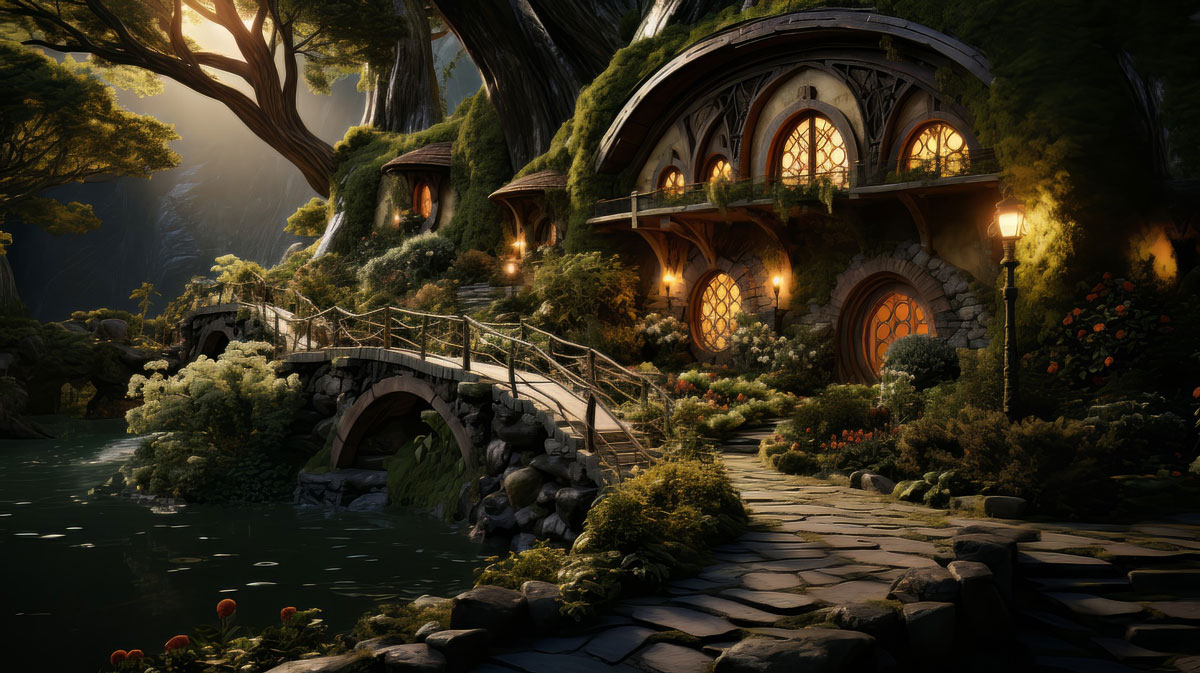
An Overview of the Best AI Architecture Generators
Here, we present 18 examples of the best and most popular AI architecture generators. We also review the general features, capabilities, user interface and main applications of these popular generators. Each of the generators we will learn about in the following has a special function according to the nature and advanced algorithms hidden in them. For this reason, each AI architecture generator is specifically used in a specific field, such as architectural visualization, interior design, or urban design. In addition, there is another classification depending on the nature of the input data of each generator. The majority of AI architecture generators simulate based on primary data which is either text or visual. To learn more about all these concepts and features, we suggest reading this section.
1. Mid-Journey in Architecture; One of the Most Popular AI Generators
Midjourney is one of the best visualization tools based on artificial intelligence, launched in a research lab by David Holz. This smart tool relies on an underlying technology similar to Stable Diffusion and was introduced to users in mid-2022. This tool allows users to explore the surreal boundaries of a virtual environment in order to gain new insights into their ideas. Currently, the news about Midjourney is sweeping the Internet and the virtual space with its potential in imaging and creating ultra-realistic environments.
This platform uses advanced machine learning algorithms to produce pseudo-realistic images; it has become an ideal tool for artists and content creators. The painting “Théâtre d’Opéra Spatial” was produced by Midjourney AI. This painting won first place in a fine art competition at the Colorado State Fair, competing with 20 other artworks. Also, due to the unique facilities this generator provides for visualization, it has been praised by architects, designers and other creative arts activists.
The Ability of Midjourney to Produce Realistic Architectural Images
Midjourney is considered one of the most effective generators of artificial intelligence architecture in the field of ideation and design concept development. With this generator, architects have a source of inspiration and an easy and accessible way to test and reproduce their ideas. Also, by being in the surreal and fantasy world of Midjourney, architects will escape from architecture’s practical considerations and free ideas. By using this tool, unique visual narratives of complex concepts and pure architectural ideas can be presented to employers.
These days, Instagram has become a platform for sharing creative images of architects. It is interesting to know that so far about 72,000 Instagram posts have been dedicated to the hashtag #midjourneyarchitecture. Midjourney, this limitless smart canvas, is an innovative tool for creating realistic images for young architects without the necessary knowledge or experience in modeling and rendering software. Today, with the evolution of Midjourney, it seems difficult to distinguish the images produced by this smart tool from real images. Version 5 of this AI architecture generator is used in the architectural profession to increase rendering speed, facilitate the design process and produce inspiring designs.
The Classification of Input Data for Midjourney’s Text-Based Architectural Visualization
However, success in visualizing the MidJourney architecture depends on mastering the definition of appropriate input information. Vague descriptions and unclassified information will lead to an unstructured image. Therefore, learning the appropriate language of artificial intelligence is vital to achieving ideal results.
With text-based input, the user can simply trigger the MidJourney command to input text by typing “/imagine”. A general order of information input is to define the subject, the main user, the background of the design, the architectural style, the time period, names of famous architects, and so on. By building powerful and effective keywords and creating a personal library of terms, you can benefit from all the features of this architecture generator. This AI architecture generator provides 4 different images for each input. You can get the output you want by repeating the operation and making changes.
Midjourney also has image-based visualization potential. In this way, you can get unique results by uploading an image and combining it with different images.

2. Fotor in Architecture
Fotor is one of the most prominent architecture visualization tools. This AI architecture generator is considered an innovative solution for the effective transfer of design ideas, development of new concepts and discovery of creative ideas in the world of architecture. Fotor is a comprehensive tool for designing, producing and editing images. It uses technology to improve image quality and add various visual effects. This platform is used in all artistic fields such as producing portrait images, 3D characters, animation, painting and other digital arts. In other words, architecture is only one of the features offered by Fotor.
Access to this platform is provided through the web version and mobile applications. Fotor’s biggest advantage is its convenient user interface and satisfactory user experience. This feature makes it possible for beginners to design and build suitable designs. Another popular feature of Fotor is the ability to save high-resolution outputs in the free version of this AI architecture generator. A variety of features, templates and design elements available on this platform provide users with the necessary platform to customize images. Users can publish unique works on social networks and sell works on NFT.
Fotor; Visualization of Architecture Based on Text and Image
Fotor provides users with two ways to visualize and receive output; 1- text-oriented visualization and 2- visualization based on the primary image. You can easily get 8 different illustrations in the style of your choice by entering written information in the premium version. By renovating and changing the style and context of the images, you can achieve your desired result. In addition, as you know, this platform also supports image-based visualization. For this reason, you can get a realistic image or an acceptable rendering similar to the same design by providing a conceptual prototype.
Fotor; Image Editing Tools
Fotor’s major advantage is its extensive image editing capabilities and related tools. With this AI architecture generator, you can easily adjust brightness, contrast, color saturation, and remove undesirable elements and characteristics from images. Therefore, you can easily benefit from this platform to improve your brand quality. In addition, the “Beauty” tool provided on this platform provides users with the ability to produce and edit portrait photos in a very desirable quality.
The Key Features of Fotor:
- 2 imaging methods; 1- Text to image and 2- Image to image
- 9 different architectural image styles
- Provide 8 different visualizations for each operation
- Web and mobile access
- Editor tools and the ability to improve image quality
- Available in a free and paid version
- Free base pricing with limited credits
- Up to 200 credits per month in the paid version
3. Jasper Art; AI Architecture Generator
Jasper is a text-based AI architecture generator. Although this generator was launched as a text content generator, its potential for impressive visualizations was also realized This artificial intelligence tool can provide you with various design options by defining design constraints and goals. A creative architect can achieve his desired result by benefiting from this technology and applying various changes to design styles and features.
Also, due to the algorithms of this artificial intelligence tool, architects will gain a more comprehensive view of project problems. Artificial intelligence implemented on the Jasper platform has given architects the opportunity to come up with creative design options and experiment with complex geometric structures. In this way, by benefiting from this AI architecture generator, more informed decisions are made regarding the architectural project. Finally, a creative design with features from surrealism is created.
Jasper Art; Import Raw Data Based on Classification
For the best results, information should be categorized based on topic, style, usage, location, and other aspects of the architectural project in this platform. For example, “photorealistic beach villa design with stone materials and sunset illustration” is an example of textual information you can upload to this platform. With an overview of the self-generated gallery and its ready-made templates, you will quickly be able to master artificial intelligence visualization. Currently, this platform is available for individuals, teams and other organizations with different fees.
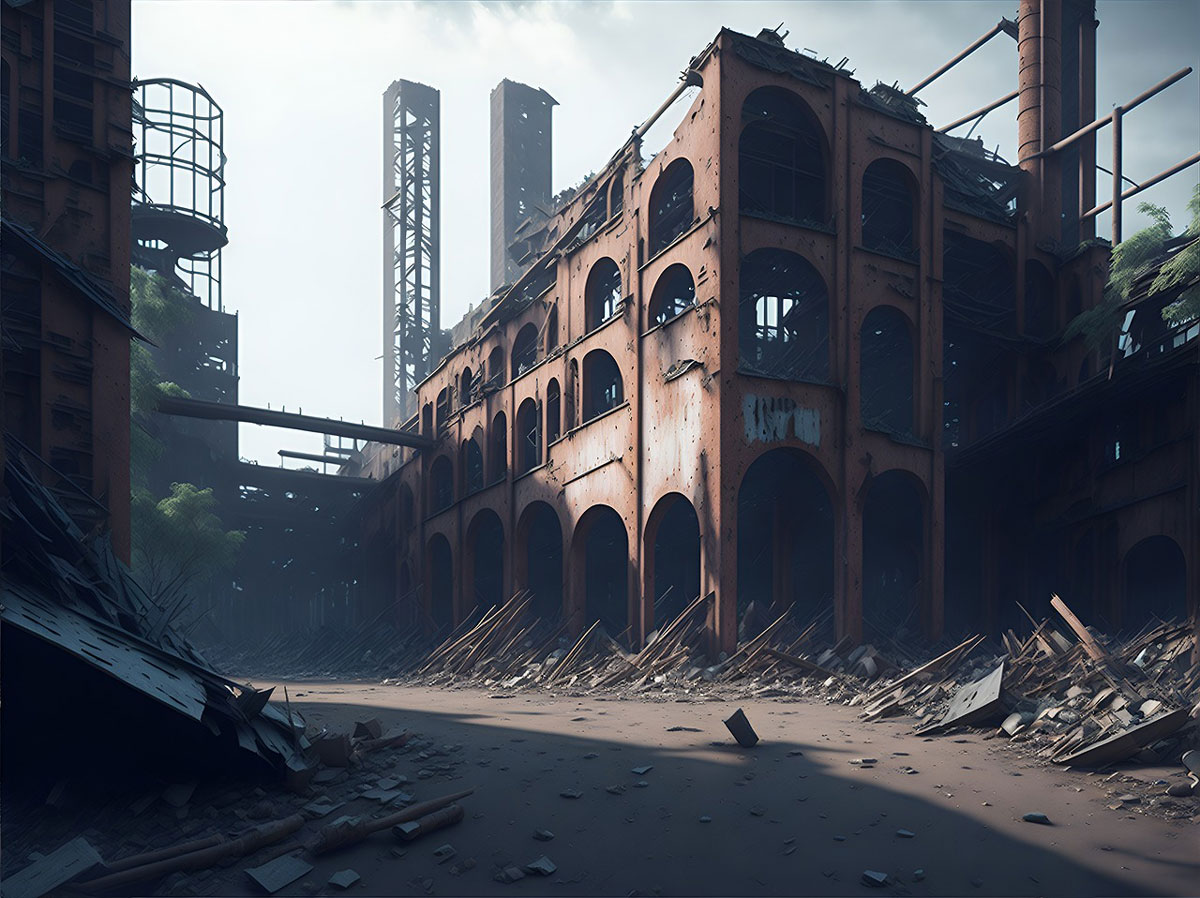
4. DALL-E in Architecture
DALL-E 2 is an artificial intelligence-based image generator developed by OpenAi (creators of ChatGPT). In fact, the first and main version of this AI architecture generator was introduced in 2021. Its updated version, DALLE 2, was released in November 2022. The distinction and competitive advantage of this platform compared to similar platforms is its algorithm and programming language.
DALL-E 2 uses CLIP (Contrastive Language-Image Pre-training) artificial intelligence for high-quality visualizations based on written content. This feature and other algorithms in the DALL-E 2 platform make it one of the most advanced AI architecture generators.
DALL-E 2 is now integrated into several platforms, including Bing. The result of this collaboration is a robot named Bing Image Creator. As stated by OpenAi, users of the DALL-E 2 platform own the generated images. In other words, users have the right to sell, reprint and commercialize their images. For this reason, this powerful artificial intelligence tool is considered one of the most popular platforms for producing digital artworks.
DALL-E 2; Visualization of Architectural Design Based on Text
This is an artificial intelligence-based architectural image creator which may have a significant impact on the way architectural designs are produced and scaled. This AI architecture generator can interpret and display architectural concepts based on written content. With this generator, a platform is created for repeating various operations and applying different changes to the architectural design quickly. These cutting-edge technological tools help you visualize ideas and share designs. On the other hand, architects will have more visual tools to convey design concepts and ideas to employers. As a result, the mental imagery and communication between the audience and the architectural design will be strengthened.
As you know, the visualization process can be started by using artificial intelligence technology and defining a series of keywords and textual terms related to the project. In this case, an acceptable rendering and an inspiring visualization of the proposed design can be achieved by spending less than 5 minutes. Keep in mind that the more details you include in the description section, the better the result will be. In other words, with a simple and intelligent explanation of your mental ideas, you can get relatively technical, accurate and realistic images.
DALL-E 2; Image-Based Architectural Design Simulation
However, the generative capabilities of the DALL-E 2 AI architecture go far beyond text-based visualization. Because this platform also has image-based display potential. Thus, uploading an image of the current state of the project is also an excellent way to visualize and get inspired ideas. This is in the form of a rendering. For example, you can get a new proposal by uploading a photo of a vacant lot and adding a text description. In another example, you can get renderings in different styles of this basic spatial pattern by uploading a sample interior design project.
Ability to Edit Images with DALL-E 2
You can also use its editor tools to make changes and improve your rendering quality. This way, you can say goodbye to post-production and manual changes. Its color brush provides you with facilities such as changing shadows, highlights, colors, textures and other visual features. This platform has brought both outpainting and inpainting features to users.
Inpainting and Outpainting; AI Architecture Generator and Restoration
Inpainting and outpainting are deep-learning algorithms that depict missing or damaged parts of an image. By analyzing the surrounding pixels and the background of the missing area, these algorithms find information and ideas for image enhancement. Using this information, an acceptable image is created by expanding the image pixels.
The outpainting feature provides the opportunity to visualize, complete and expand the original image by pushing beyond its current boundaries. For this reason, this tool is an ideal method for producing panoramic images or visualizing missing details. On the other hand, the inpainting feature offers the possibility of producing images with specific details or removing unwanted elements and features. All in all, all these features and a unique visualization approach make it a valuable tool for editing images and renderings of architectural projects.
Architects can use these algorithms embedded in DALL-E 2 to restore, and preserve historical monuments and architectural structures. By benefiting from this smart tool, architects can find new restoration ideas and solutions. They can also restore damaged historical structures to their former glory and originality.
DALL-E 2 User Interface and Cost
At first glance, the user interface of this platform may seem complicated. This case is difficult for beginners in imaging and technological tools. To solve this problem, at the beginning of the work, the necessary documentation and training is provided to the users. The DALL-E 2 model is based on credit. In the same way, at the beginning of the route, limited free credit is available. After completing the initial credit, users are required to pay a subscription fee of at least $15 to benefit from the features of this platform.
Key Features of DALL-E 2
- Images of excellent quality and high accuracy
- Visualization based on text and image
- High speed of producing images
- Ability to edit images with outpainting and inpainting techniques
- Relatively complex user interface

5. Stable Diffusion; Open Source AI Architecture Generator
Stable Diffusion is a game-based AI architecture generator developed by StabilityAI. The potential of this generator for imaging fast and efficiently is one of its prominent features. Visualization in this powerful generator is done using neural network technology and new algorithms and deep learning techniques. By using this AI architecture generator and applying changes in parameters such as light, texture and materials, architects can produce their desired image output.
Stable Diffusion; Access Through the Easy Diffusion User Interface
Since Stable Diffusion is an open source generator, using the web or trial versions is not sufficient to fully take advantage of its capabilities. You can benefit from different user interfaces created by users using this generator. One of the most intuitive and useful user interfaces for this generator is Easy Diffusion. This software has convenient user space for uploading or downloading images, merging different models, and changing basic settings. By benefiting from the user space of this software, you can fully utilize Stable Diffusion’s open source feature.
This AI architecture generator uses different learning models for its purposes. This generator provides several remarkable architectural visualization options. “Lora” is one of the most popular models for illustration in the field of interior design. “DVArch” is another model that visualizes in different styles based on keywords. “Ubranscene15” also focuses on urban planning and design, producing stunning images of the urban landscape.
6. Maket.AI; Dedicated AI Generator for Architectural Plan Design
The process of completing the design and achieving a comprehensive architectural plan to meet all functional and aesthetic needs can be challenging and time-consuming. Today, thanks to an AI architecture generator called Maket.AI, this process can be carried out faster and more efficiently than before. Maket.AI is a software platform based on artificial intelligence algorithms and was created specifically for the field of architecture. The many capabilities of this technological tool for the rapid production of floor plans, the discovery of various design styles and the provision of specialized solutions in the field of materials and materials meters and cost estimation, can completely transform the architecture industry and the project design process.
Maket.AI emerges as a powerful and intelligent companion for architects in the labyrinth of the design process to discover the best option. By using this tool, you can turn design challenges and limitations into opportunities for creativity and innovative designs. This tool is a launching pad for architects to step into the unfamiliar realm and discover efficient designs in the shortest possible time. Speed and free resources are the most important attributes of this AI architecture generator.
By increasing the speed of design in the early design phase, architects will have more opportunities to think deeply and efficiently, choose the most effective implementation methods, and communicate constructively with the client. This AI architecture generator provides a wide range of flexible design options. For this reason, the employer’s discretion to choose his favorite plan also increases.
Using Maket.AI
Maket.AI is a modern and ideal way to achieve speed and accuracy in architectural design and production. The entry of the main parameters regarding the project’s spatial, functional and aesthetic information is done through natural language. For example, you can include information including the scale of each spatial arena and how all spatial arenas are interconnected in your input information. Maket.AI provides you with hundreds of different plans in a few minutes, based on information or applied restrictions and artificial intelligence algorithms. Maket uses advanced algorithms.Ai recognizes patterns in initial design data. Accordingly, with the approach adopted in this AI architecture generator, the need to prepare numerous manual drafts and the common design process is completely eliminated.
Maket.AI is accessible on all internet connected devices. You can spend a few hours drawing a plan in a few minutes using this tool. On the other hand, after receiving the initial plans, you can create custom plans according to your unique thought process for the project. This is done with just a few clicks. Finally, you can export the plans produced by this valuable architectural tool in DXF format.
7. Architectures; Dedicated AI Generator for Architectural Planning and Design
Architecture is another application generator to facilitate the design process for architects of all experience levels. By recognizing the potential of a residential architecture project, this generator facilitates decision-making. On this platform, you can easily include the existing condition of the site plan, geographical variables, limitations related to the plan budget and the interests of the employer in your analysis.
By taking advantage of Architectures advanced artificial intelligence technology, you can design beyond common principles and limitations. Many stages of planning and designing the initial architectural ideograms are done automatically by this AI architecture generator. It is a fact that automation is a way to get rid of repetitive tasks and increase human resources speed and creativity. So in this way, it can be said that Architecture is a very useful tool for automating the architecture process and increasing construction speed.
Function of Architecture Generator
This AI architecture generator, benefiting from a wide range of special features, creates a very satisfactory user experience for its audience. It includes intelligent design elements, a violation warning system, cost estimation tools, techniques for choosing the right materials and 3D renderings of architectural projects. You can access a library of pre-designed elements through this platform. All of these ultimately lead to reduced design time, making informed decisions and creating custom designs in minutes; Designs that take into account all requirements and construction laws and other operational considerations while achieving an aesthetic form and maximum efficiency.
This intelligent generator deals with a wide range of building information and a specific boundary is determined by various design parameters. In other words, this architectural tool achieves massive knowledge about your project by analyzing primary data. Based on this information framework, it offers several design options. Design options are not limited to schematic and conceptual illustrations of the project. Rather, design options benefit from sufficient precision and detail regarding each spatial area. This includes the placement of openings, and the selection of sustainable materials.
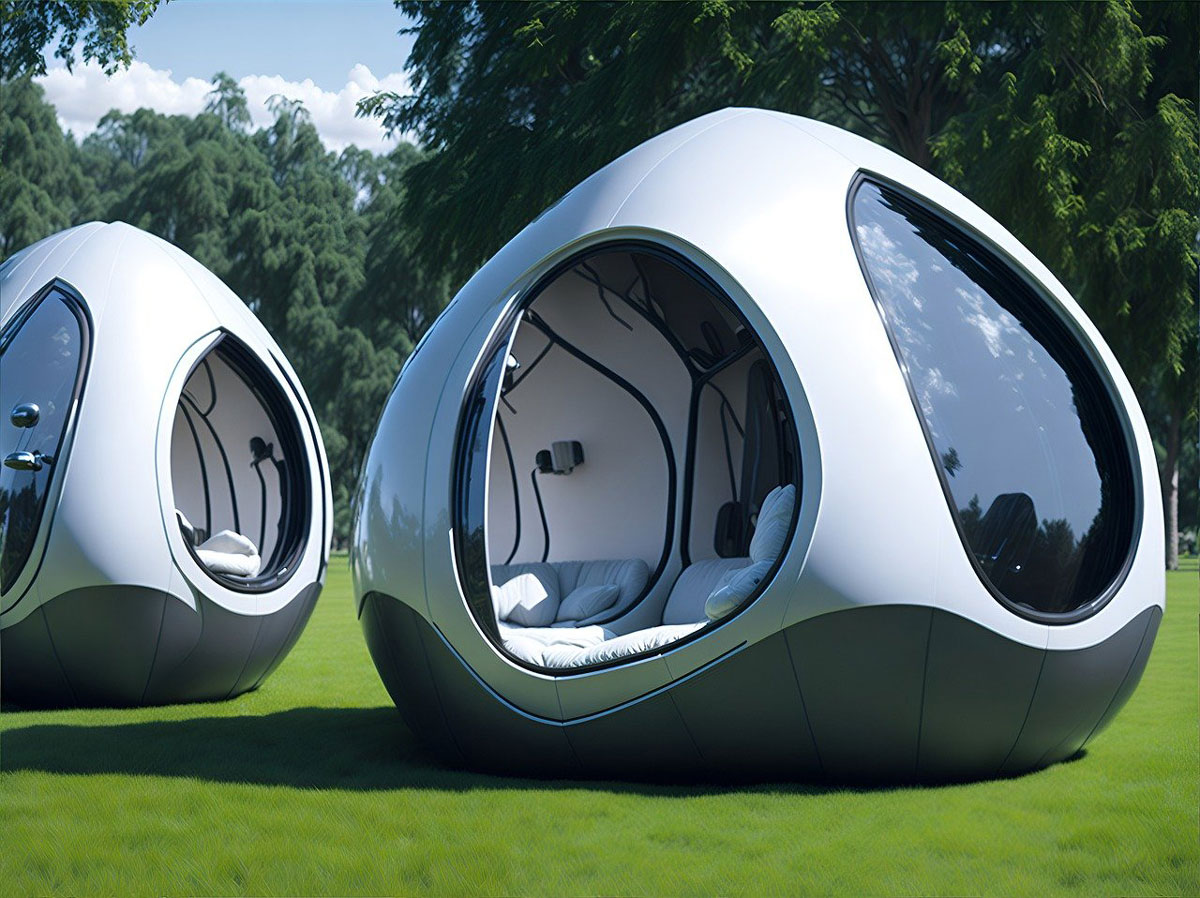
8. Sidewalk Labs; AI Architecture and Urban Design Generator
Sidewalk Labs is one of the most useful smart platforms for architecture, design and urban planning projects. This website was launched by the parent company “Google Alphabet Inc” to make the city system more efficient and intelligent. One of the prominent features of this AI architecture generator is the embedded “Delve” tool. This tool uses advanced machine learning algorithms to optimize the building based on users’ needs.
In this way, architects can design a sustainable, efficient and habitable architectural project. Artificial intelligence used in this architectural generator offers various design options to optimize building performance and create flexible spaces. In this way, all complex design concepts including energy efficiency, comfort and safety are applied to the proposed options.
Sidewalk Labs Works in Urban Design and Landscape Architecture
As you know, the spatial quality and user experience of many cities today is declining. For this reason, another goal of this intelligent generator is to create huge urban changes and transformations through an urban planning perspective. The realization of such a goal became possible in the shadow of the integration of technologies such as smart sensors with artificial intelligence algorithms. The technologies used in these smart sensors receive valuable data such as traffic patterns, air quality and noise pollution levels.
Today, this tool has been welcomed by a wide range of activists in the field of architecture and urban design, and its functionality has been proven at the global level. New York, Toronto, and Singapore have recently used this efficient tool to manage congestion and revise the urban landscape in many metropolises. The Sidewalk Labs website provides an overview of livable suburban areas. This website is interesting even for citizens interested in urban innovations.
9. NightCafe in Architecture
NightCafe is considered one of the leading artificial intelligence art generators. This generator’s potential to provide flexible layouts has made it one of the most popular smart tools for artists and graphic designers. This is because it has more diverse algorithms and tools than other generators. NightCafe is considered one of the architecture generators for ideation.
Drawing schematic and conceptual maps in the fastest possible time is one of the achievements of this generator for architects. You can easily use this generator to produce abstract, creative and aesthetic architectural images. For this reason, this generator is considered an inspiring and valuable source for cultivating aesthetic skills and architectural ideation.
NightCafe is accessible online. This platform produces images with high resolution and quality suitable for printing. On the other hand, this generator has a very easy user interface that has a lot of visual appeal. This smart tool provides visual content in two ways. 1- text-based illustration and 2- style change and visual content-based illustration.
NightCafe Operation: Text-Based Visualization + Video Content Provision
NightCafe is another text-based AI architecture generator. In other words, this generator visualizes your written content and input information. But there is a point about this smart technological tool that differentiates it from other similar tools. NightCafe’s capabilities are not limited to images. But this generator also provides video content. In fact, NightCafe’s conceptual and creative spaces are wheelchair accessible. You can simply watch the development of your concept design using the “evolution” option after receiving the rendering you want, and feel the spatial experience of your architectural design by watching the video.
NightCafe Operation; Illustration Based on Visual Content + Style Modifications
NightCafe’s second method of presenting visual content is based on primary images. You can use the “Style Transfer” feature of this platform to change your images’ style. Users of this generator can simply use the web interface to upload images and customize the image style to one of 50 preset styles. It is also possible to upload and change video styles on this platform. For this reason, NightCafe has become a popular tool for video content producers.
NightCafe’s Credit System
NightCafe provides services to its audience via credit. Based on this, you can benefit from this platform by paying a monthly fee. Of course, there are other ways to get free credits in this artificial intelligence generator. One of the ways is to get credit for 5 illustrations per day by subscribing to this generator’s newsletter.
There are other very diverse methods based on community participation and intranet interactions. Methods include sharing the newsletter content, publishing works on social media, “liking” the works of other architectural community users, commenting and receiving others’ comments about this platform’s works. In other words, activity and earning credit on this platform are mutual. Increasing activity leads to greater credit, which in turn provides a platform for more activity.
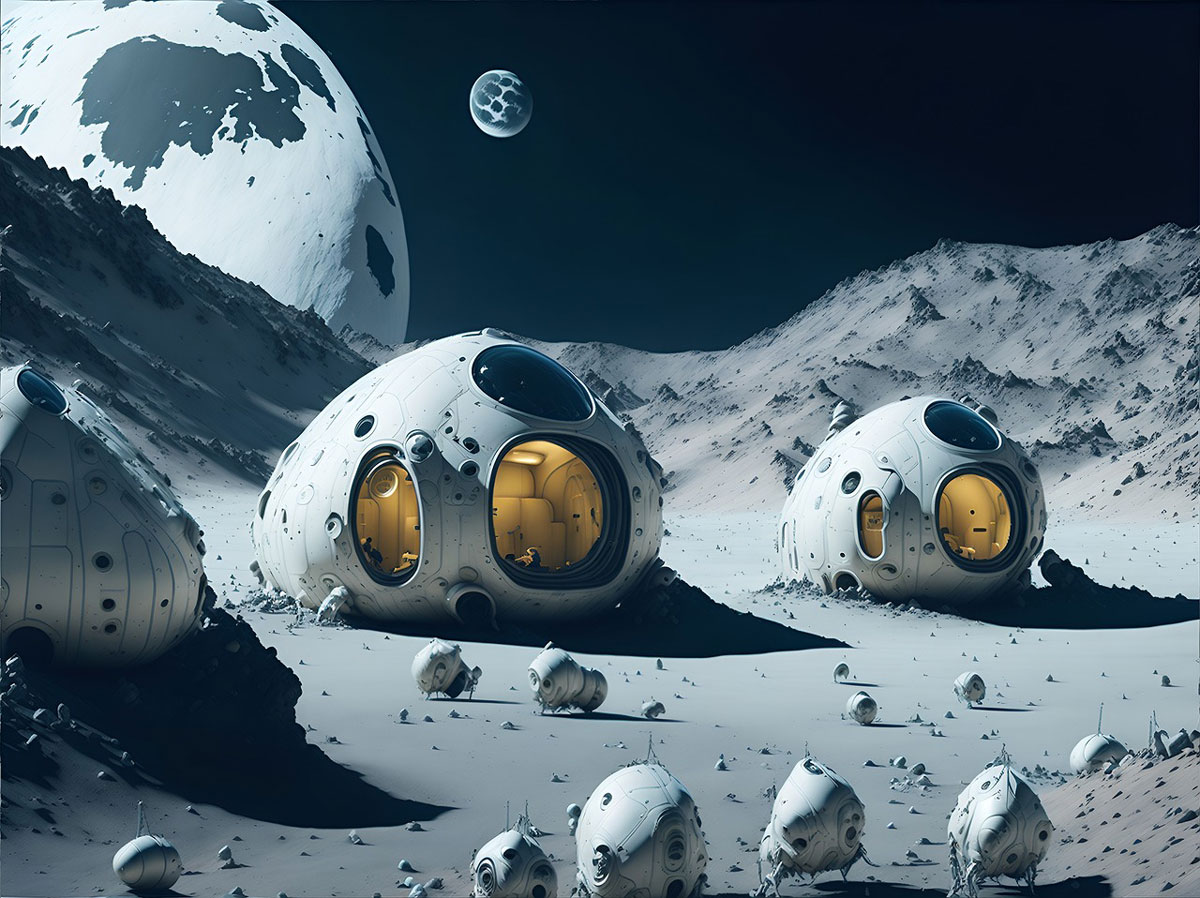
10. Kaedim; Dedicated AI Generator for Architectural Modeling
Kaedim is an AI architecture generator in the field of 3D architectural modeling. The exemplary potential of this generator for modeling has made it a popular choice in the gaming industry. The advanced algorithms used in this generator include machine learning, adversarial generative networks and natural language processing. By using these algorithms on this platform, it becomes possible to convert simple and schematic two-dimensional ideas into accurate three-dimensional models.
Kaedim is a practical and guaranteed tool for architects. Because this tool completely removes the task of 3D modeling from architects’ shoulders. In addition, architects can freely explore creative concepts using this platform. In this way, architects can visualize their ideas in a very fast way. They have the opportunity to modify and apply the changes they need.
Kaedim has a colorful role in the construction planning process as well as creating the mental image of the design in users’ minds. This platform provides detailed documentation of 3D models to the architect and client. Accuracy and realism are very critical in architecture. In such an industry where precise and high-quality details come first, Kaedim is considered a very useful technological tool.
11. Arko.AI; Artificial Intelligence Generator Compatible with Architecture Software
Arko.AI provides realistic and high-quality renderings in a short time. This generator is a manifestation of the unique potential of AI in the construction and architecture industry. Arko’s unique feature. AI is compatible with architectural software such as SketchUp, Revit and Rhinoceros. Added this generator to the architectural toolbox improves the design process, and increases architects’ speed and creativity. That is why this generator is considered a powerful medium for visualization and rendering in architecture. This AI architecture generator turns your 3D models into extraordinary masterpieces that reflect reality.
12. Luma.AI; AI Architecture Generator for Restoration and Reconstruction
Luma.AI is a professional AI-based route finder for scanning and 3D modeling of architectural designs. This platform models and reimagines architectural designs by applying advanced algorithms such as computer vision, deep learning, and generative adversarial networks. Modeling in this generator is also possible by uploading images. In this way, this generator can provide architects with a comprehensive view of architectural elements.
But the distinguishing point of this generator is its genius in visualizing historical structures and building renovation and restoration projects. In this way, this smart tool can be used to preserve historical architectural works and create virtual twins.
Of course, Luma’s power is unmatched.AI does not end there. By using this AI architecture generator, you can ensure the compatibility of the upcoming proposed changes with the existing structure and status of the project. Also, due to the potential of this generator to increase aesthetic and functional appeal, it can be used in virtual reality and augmented reality projects. This will increase the level of user interaction with the design to a higher quality level.
13. Dream; AI Architecture Generator
Artificial intelligence-based visualization generator Dream was launched by Canadian startup WOMBO. This generator is used in architecture to find creative and innovative design solutions. The Dream platform can integrate with other architectural tools and software such as BIM. Therefore, by using this platform, architects can turn their project data and conceptual ideas into an accurate and high-quality model. In addition, it is possible to create realistic illustrations and animations based on the same design data.
Many people believe Dream is one of the best text-based AI architecture generators. This platform has a very convenient user interface. The visualization process in this generator is similar to NightCafe’s performance, and different art styles are accessible there. In this way, you can start the visualization and rendering process of your architectural project by uploading textual content and choosing an art style. In addition, the Dream platform allows you to upload an image of your choice as a reference. In this way, you can use images that match your line of thought for original illustrations in the same style and context.
14. Arkdesign.AI; AI Architecture Generator
Arkdesign.AI is a revolutionary tool in the field of application of artificial intelligence in the architecture profession. This AI architecture generator provides architects with the possibility of optimizing architectural schematic designs quickly and efficiently. In this way, accurate floor plans can be produced according to the specific needs of each project, with energy efficiency and maximum performance.
Due to its extensive information library and ready-made templates, this platform is a suitable tool for architects of all experience levels, whether a beginner architecture student or a professional architect. In addition, due to features such as automatic cost estimation and intelligent 3D rendering, architects can advance the design and implementation process much faster than traditional processes.
15. Archistar; AI Architecture Generator for Site Analysis
Archistar is an AI architecture generator that specializes in site analysis, project status assessment, and rules-based conceptual design. By using this software, architects can perform evaluations related to lighting, shading and air conditioning in a very short period of time.
16. Hypar; AI Architecture Generator
Hypar is an artificial intelligence generator to empowers architects and creates a platform for designing or modeling projects with an efficient and collaborative approach. Benefiting from the services of this platform leads to the facilitation of the design process, design optimization and automation of many related matters. In addition, through the use of this platform, a valuable opportunity for interactive collaboration and project data sharing among team members is provided. Hypar minimizes errors and delays in project processes. It is also possible to integrate this generator with other effective technological tools in architecture.
17. Foyer Neo; AI Architecture Generator for Interior Design
Foyr Neo is artificial intelligence-based software that exclusively deals with decoration and interior design. This tool provides creative ideas and interior design full of visual appeal to architects and interior design specialists. Reduction of design time, production of accurate and scaled plans, as well as the rendering of the proposed plan within a few minutes, are among the advantages of using this AI architecture generator.
18. PlanFinder.AI; AI Architecture Generator
PlanFinder.AI is a revolutionary generator in the field of architectural design, floor plan drawing and interior decoration. This tool provides new ideas and smart solutions for renovating and decorating architectural projects in just a few clicks. Applying this innovative tool simplifies the planning process and saves valuable time or resources for architectural professionals.
PlanFinder uses a wide range of sophisticated algorithms and machine learning techniques. But unlike the complex technologies hidden in this powerful plugin, its user interface is very simple and well designed. The unparalleled speed of analyzing the parameters desired by the architect and providing multiple design options based on the primary data are two of the most prominent features of this generator. PlanFinder also makes it easy to compare or evaluate proposed plans and interior decoration options.
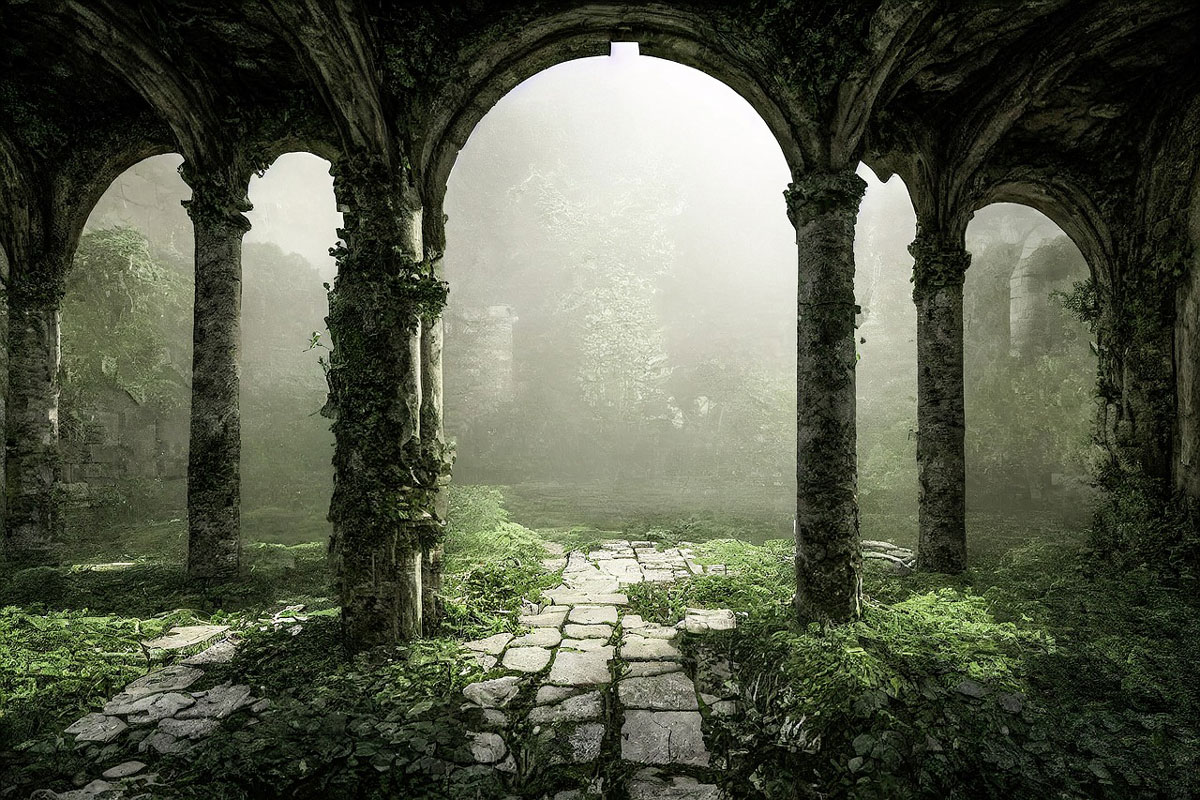
An Overview + FAQs
AI architecture generators are powerful tools for exploring and developing ideas, optimizing and simulating innovative designs. These architectural generators, through the production and evaluation of a wide range of design options, lead to making informed and intelligent decisions in the process of designing architectural projects. A broad, more complex, and more efficient operation of these generators is likely to come with the advancement of artificial intelligence technology.
Let Us Conclude by Examining AI’s Opinion Regarding AI Architecture Generators and Their Potential Impact on Future Architectural Careers:
AI has the potential to revolutionize the way architecture is designed and experienced by automating tasks currently done by humans. This will lead to a shift in architectural career skillsets, with an increased emphasis on creativity and problem-solving. AI will also create new opportunities for architects to explore, allowing them to create groundbreaking designs that were previously impossible. AI can also be used to automate mundane tasks, freeing up architects to focus on higher-level creative activities. AI will also allow architects to work faster and more efficiently, reducing the amount of time and resources needed to complete projects.
Will Artificial Intelligence Replace Architecture?
The nature of architecture makes it possible to benefit from artificial intelligence. For this reason, architects use the capabilities of new technology in different ways for ideation, analysis, simulation, and detailed drawings. Artificial intelligence has a significant impact on the architectural design process, but it is not considered a replacement for architects! Despite the unparalleled power of artificial intelligence in visualization, architecture still requires creativity, intuition, critical thinking and decision-making powers of human power. Artificial intelligence, therefore, is only a practical and valuable tool for facilitating things, increasing creativity, and improving the designs of architects.
The integration of human capabilities and artificial intelligence ensures successful results in architecture. After all, two heads are better than one – even if one of them is a computer! The combined approach of AI and human cognition ultimately leads to design in a more creative way. AI architecture generators provide innovative solutions to architectural projects. However, to adapt these designs and solutions to specific real-world requirements or constraints, architects must step in. On the other hand, most architectural generators are used in schematic visualization. In other words, in many cases, the task of producing technical documents and drawing high-quality executive plans is still under the responsibility of the architect. And the architect must be prepared to work overtime to finish the task, because AI architecture generators just don’t understand the concept of deadlines!
Will AI Architecture Generators Replace Architects as a Profession?
No, AI architecture generators will not replace architects. In spite of artificial intelligence’s unparalleled abilities in visualization, architecture still relies on the creativity, intuition, critical thinking, and decision-making powers of people. Artificial intelligence, therefore, is only a practical and valuable tool for facilitating things, increasing creativity, and improving architects’ designs. So if you’re an architect, don’t worry! AI isn’t here to take your job away. It’s here to give you a helping hand, literally!
AI architecture generators may reduce the amount of human labor needed for certain projects, but they are unlikely to replace architects entirely. Architects bring a level of creativity and innovation to their work that AI can’t replicate. In the end, AI may just be a tool to help architects do their job better. AI architecture generators are like a pair of scissors to an architect. They can help expedite certain tasks, but they don’t replace the artistic and creative decisions that a human architect brings to the table.
What is the Best AI Architecture Generator?
The answer to this question directly depends on the function of the generator and your purpose of using the generator and the nature of the architectural project. But today, in general, several AI architecture generators in the field of visualization are particularly popular among architects. Valuable design and visualization tools such as Midjourney, Maket, E-Dalle, Fotor, Stable Diffusion and other generators introduced in this article are some examples of the most popular and best AI architecture generators.
Suggested articles for reading:
important construction technology in 2024
World’s Best Modern Architecture Buildings
References:
mspoweruser | purefuture | parametric-architecture | easywithai | rascoh | starryai | bloomberg | render4tomorrow | forbes | toolsai | analyticsinsight | fotor
Image sources: pixabay

